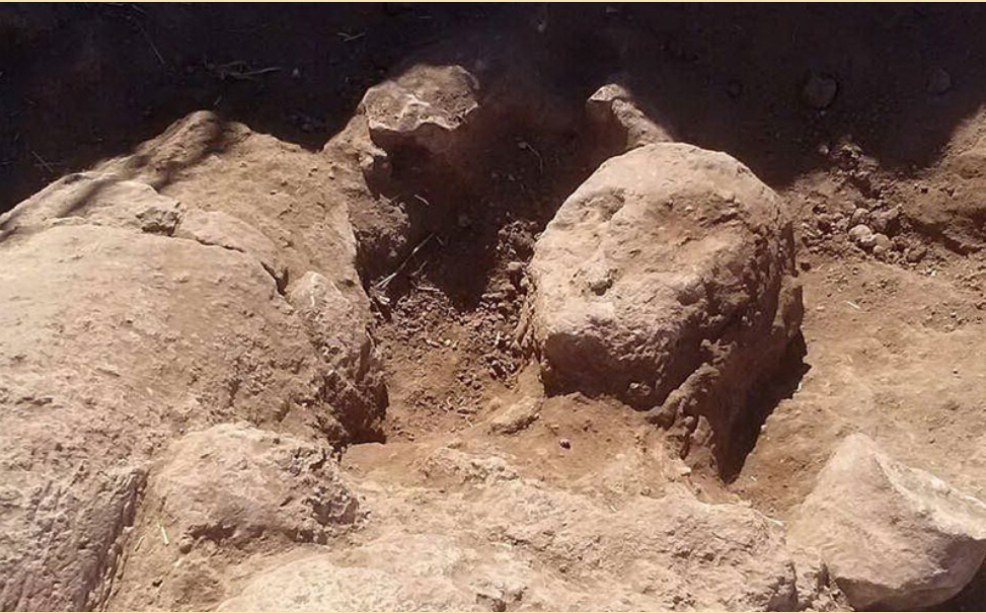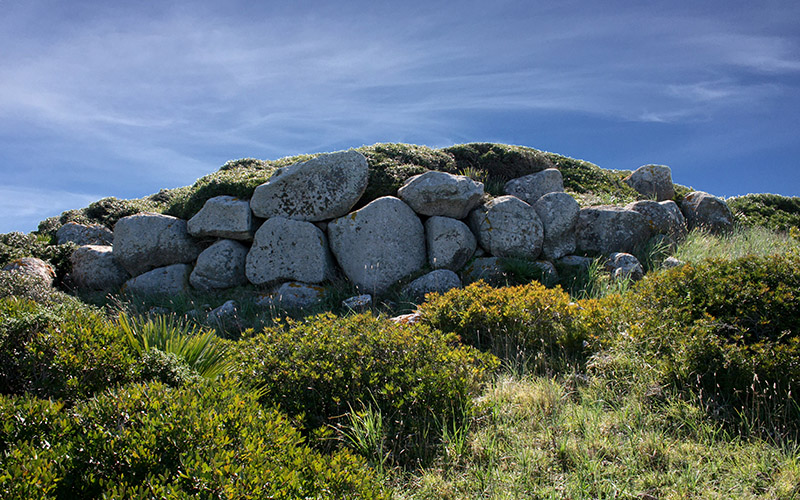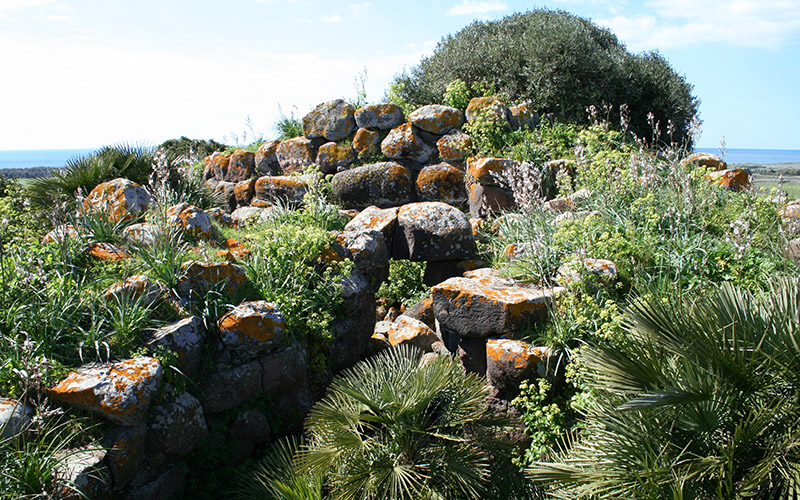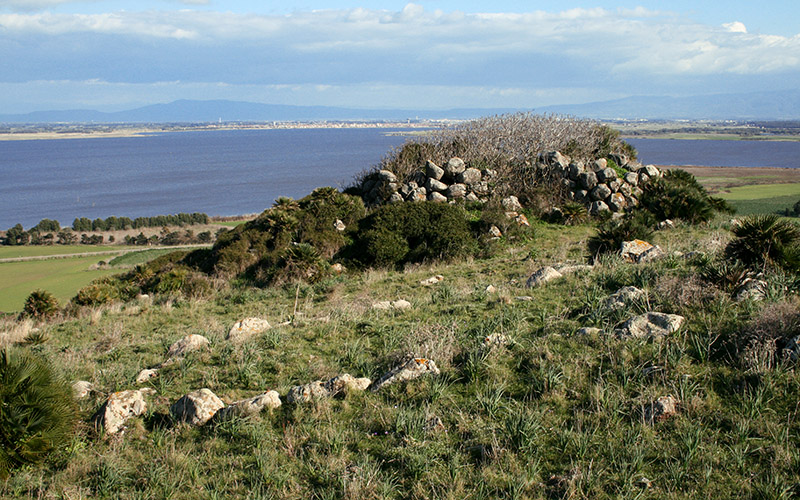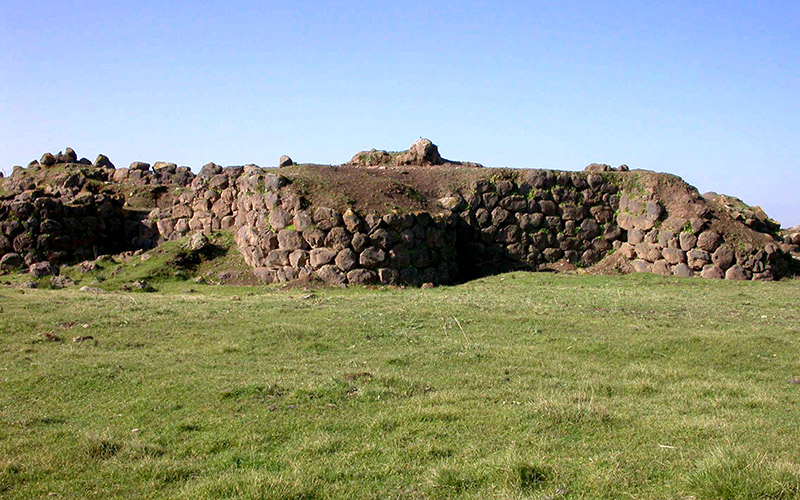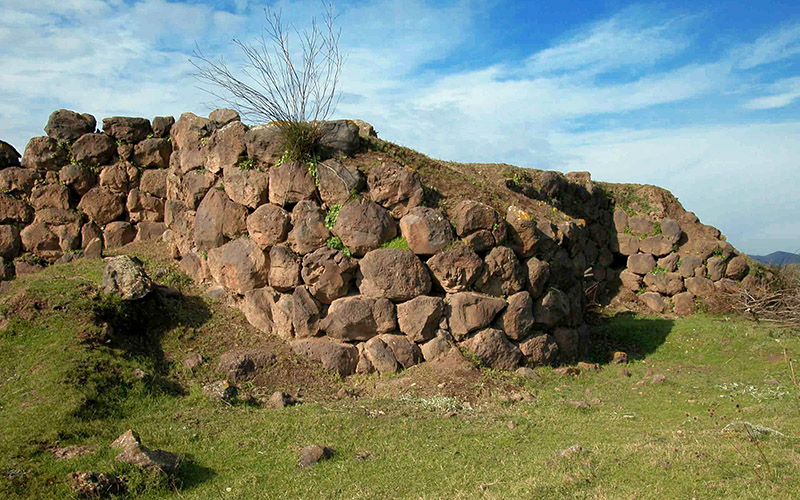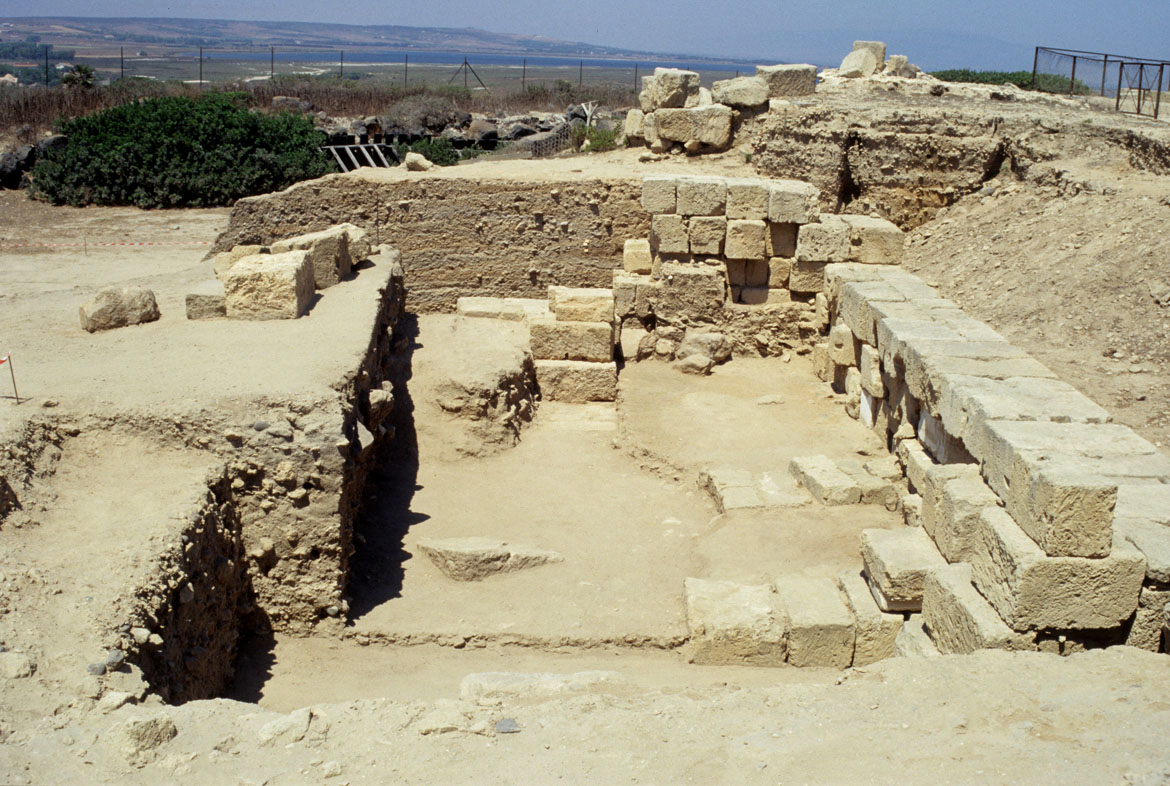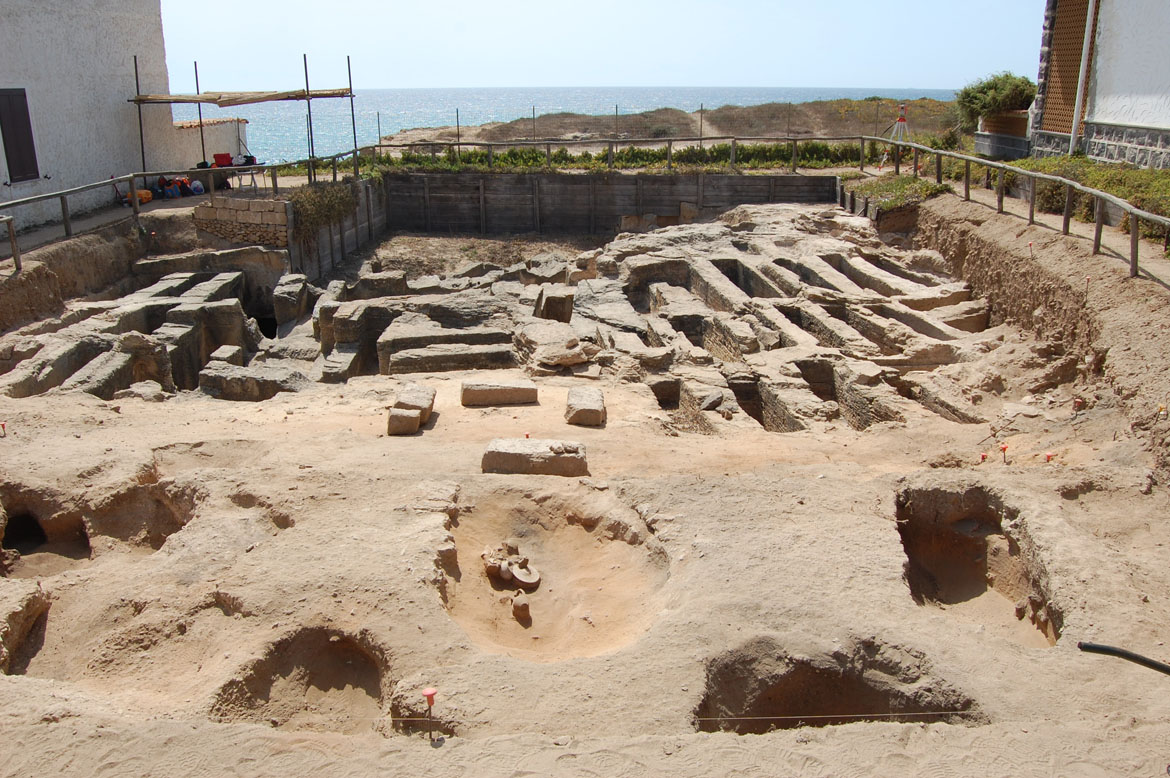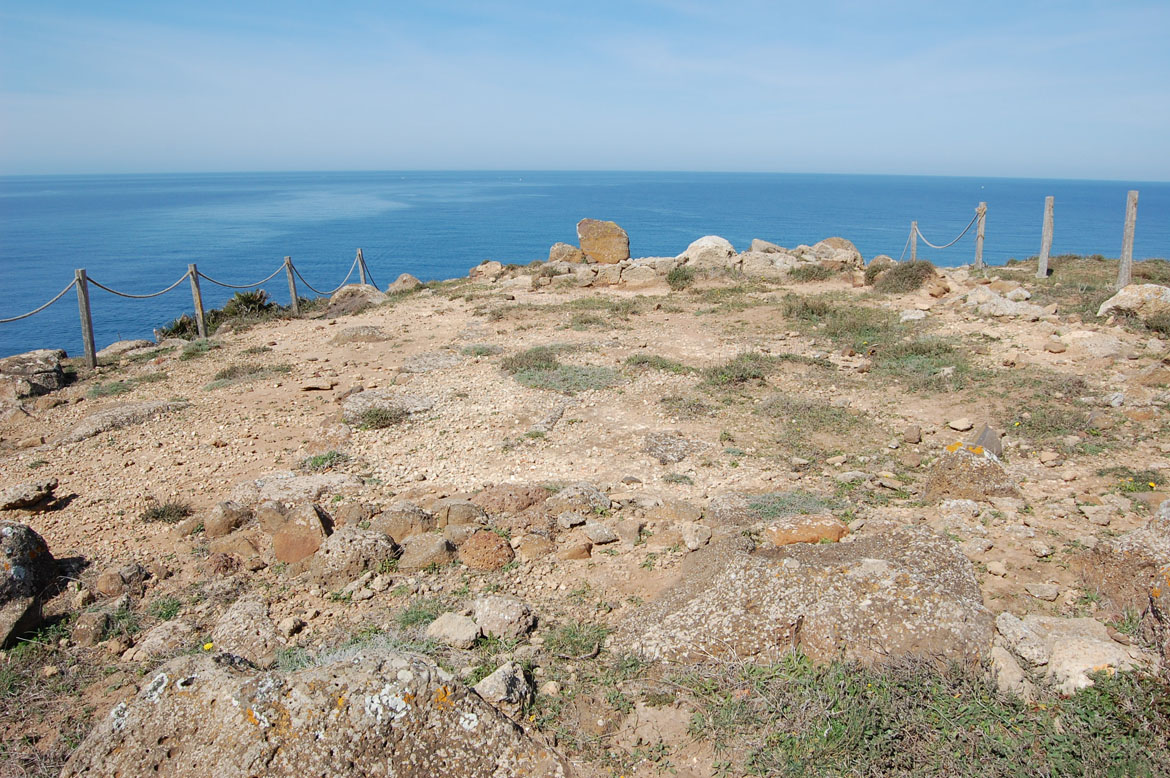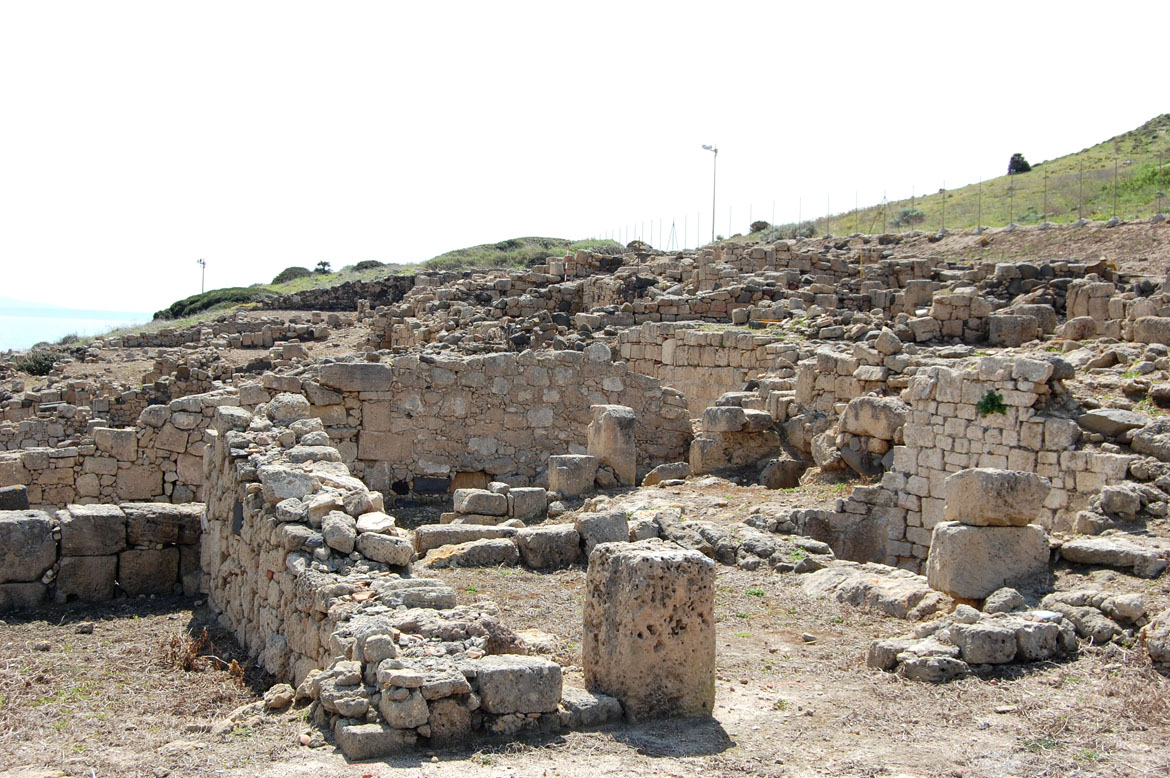The peoples of Sinis
The Sinis area, which has complex and rich geographical and environmental features, is also dotted with numerous archaeological sites belonging to the nuragic, phoenician-punic and roman periods.
The origins of nuragic civilisation
The Sinis has provided scarce but significant archaeological evidence of the phases preceding the nuragic period.
Scant remains of the early bronze age are extant: they include the underground tombs of Serra ‘e is Araus near San Vero Milis with materials belonging to the Bell Beaker-Bonnanaro culture (early bronze 1) and those of S’Arrocca Tunda with elements of material culture belonging to the early bronze 2 period.
Remains from the middle bronze age 1 are the chamber tombs (domus de janas) of Serra ‘e is Araus and those in the village of Sa Pesada Manna at Cabras.
The nuragic period
Between the middle bronze age 3 and the recent bronze age, from the 16th to the 13th centuries BC, we witness the massive spread of classic nuraghes in two areas of the Sinis district: central-northern, in the territory of today’s San Vero Milis and Riola Sardo, and central-southern, in the territory of Cabras.
From the earliest archaeological investigations, the Sinis revealed a high density of nuraghes. According to a recent count by scholar Alessandro Usai, some ninety-three nuraghes have been found in this area: the least frequent type is the simple, or single-tower nuraghe of normal size. There are several complex nuraghes, and finally a large number of small nuraghes, known as nuracheddus.
About seventy-one nuragic settlements have also been discovered: they developed in the golden age of the nuragic fortresses and continued to be inhabited after their decline.
The most notable are the nuraghes Sàrgara, Piscina Arrubia, Su Cadalanu, Leporada and Matta Tramontis in the southern area in the territory of Cabras, and Su Cunventu, Spinarba, Nurache ‘e Mesu and Sa ‘e Procus in the northern part belonging to San Vero Milis.
Thus, this territory is dotted by nuraghes and settlements which generally occupy the summit of hills and the borders of the plateaux, forming a network established to control and manage the area. The area also shows surprising scarcity of the classic Nuragic collective burials, the ‘tombs of the giants’: only three are known, of which two destroyed and one (Su Cuccuru Mannu of Riola) not constructed but dug out of a sandstone ridge. The religious structures are also few in number, either destroyed or in very poor condition. The most notable ones are the sacred well of Cuccuru ‘e is Arrius and the hypogeum of San Salvatore, dating from the Roman Imperial period, consisting of a round underground chamber and an access staircase. It recalls very closely the design of nuragic holy wells and might have originated from one of them.
The phoenician-punic age
Between the 12th and the 9th centuries BC, in the late bronze age and early iron age, in the nuragic communities we note an interesting presence of pottery and bronze objects of eastern origin, first Cypriot and subsequently phoenician. In this period there is evidence of trading between the different peoples and cultures, but the foreign traders did not yet establish true settlements. From the 8th and 7th centuries BC, phoenician presence on the island became more stable. Particularly important was the area of Tharros, whose phoenician settlement dated from the 7th century BC, developing in the areas of Capo San Marco and San Giovanni.
The punic (i.e. Carthaginian) presence is documented starting from the 6th century BC.
The spread of population in the Sinis peninsula is indissolubly linked to the history of the city of Tharros, the only urban centre controlling the northern border of the area of today’s Oristano. The marked transformations which occurred in the city following the advent of the carthaginians soon extended to the surrounding area.
The carthaginians preferred to occupy the plains area but also the slopes of the low reliefs found in the area: remains of their presence are found from south to north, especially around the Mistras lagoon and in the strip between the lagoon, the Cabras wetland, the Su Pranu plateau and the sea.
In the earlier phases, punic presence is documented mainly by pottery findings, mainly amphoras used for transportation. In the 5th century, their presence on the territory intensified, with few large settlements and a large number of small villages. This hierarchy of settlements stemmed from a policy of in-depth exploitation of the territory.
The late punic period
In the 4th and 3rd centuries BC population pressure on the territory peaked, with a large number of settlements, mostly in continuity with earlier periods. Recent studies, mainly referred to surface surveys, indicate that the local people built a number of places of worship, witnessed by the presence of pottery. In many cases, nuragic monuments present in the area were reused as religious sites.
Burial areas are less well known, except for the necropolis of the city of Tharros.
The organisation of the territory of the late punic period was largely maintained after the passage to roman domination. The existing settlements and sacred structures continued to be used until early imperial times.




